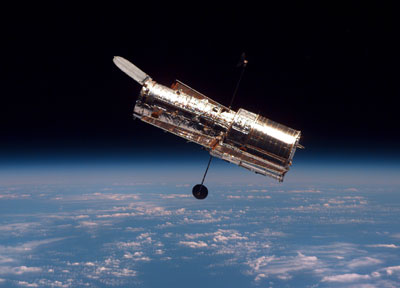 |
|
The breathtakingly beautiful Eskimo Nebula is an intricate structure of shells and streamers of gas around a dying Sun-like star 5000 light-years away. The disc of material is embellished with a ring of comet-shaped objects, their tails streaming away from the central, dying star. The planetary nebula began to form about 10 000 years ago, when the dying star started to expel an intense ''wind'' of high-speed material out into space. |
Resembling a beast from a nightmare rearing its head from a crimson sea, this celestial object is just a pillar of gas and dust. Called the Cone Nebula (in NGC 2264) because in ground-based images it has a conical shape this monstrous pillar resides in a turbulent star-forming region. This picture, taken by the Advanced Camera for Surveys (ACS) aboard the ESA/NASA Hubble Space Telescope, shows the upper 2.5 light-years of the Cone, a height equal to 23 million round trips to the Moon. The entire pillar is seven light-years long. The Cone Nebula is a cousin of the M16 pillars, which the Hubble telescope imaged in 1995. Consisting mainly of cold gas, the pillars in both regions resist being eroded away by the blistering ultraviolet radiation from young, massive stars. Pillars like the Cone and M16 are common in large regions of star birth. Astronomers believe that these pillars may be incubators for developing stars. |
This ESA/NASA Hubble Space Telescope image shows one of the most complex planetary nebulae ever seen, NGC 6543, nicknamed the ''Cat''s Eye Nebula''.Hubble reveals surprisingly intricate structures including concentric gas shells, jets of high-speed gas and unusual shock-induced knots of gas. Estimated to be 1000 years old, the nebula is a visual ''fossil record'' of the dynamics and late evolution of a dying star. |
While hunting for volcanic plumes on Io, the NASA/ESA Hubble Space Telescope captured this image of the volatile moon sweeping across the giant face of Jupiter. |
This image shows a planetary nebula. A sun-like star has undergone ''death tremors'' at the end of its life. The star had difficulty in getting enough fuel to keep up its nuclear furnace, and has now shed off some of its surface material in two directions. |
The Hubble Space Telescope moves slowly away from Discovery following its release. The photo was taken during Servicing Mission 2 in 1997 |






